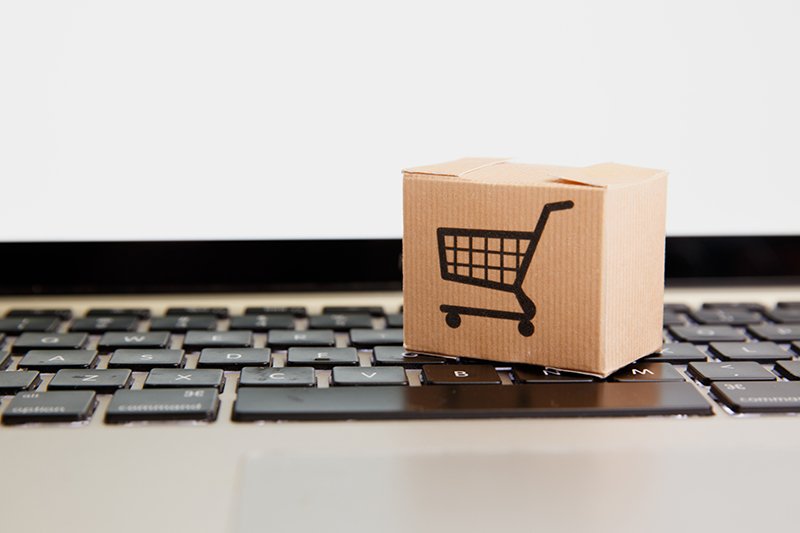Delivering the best for your customers on an e-commerce platform

E-commerce businesses come in all shapes and sizes, even if most people’s first thoughts turn to global giant Amazon. Three of the top 10 global online retailers by e-commerce sales are web-only companies, but there are a significant number of businesses that mix both online and offline retail channels. While some companies are able to leverage their physical stores and turn them into effective showrooms, most are juggling between attracting customers to make purchases both online and offline. In light of recent changes to consumer purchasing habits due to the global coronavirus pandemic, more and more businesses are focusing on their e-commerce sales strategy, both as a means to serve existing customers but also to reach new customers as traditional in-store earnings plummet.
Why is e-commerce such a vital retail sales channel?
The potential to reach a global audience is limited only by the ability to navigate global logistics and get products to their end destination. With an effective website or mobile app, the power to connect with consumers around the world becomes a reality. Increasingly tech-savvy consumers expect a user-friendly online experience that, crucially, allows them to shop from anywhere. While physical stores have opening hours and require a huge amount of manpower to maintain functionality, e-commerce is ready whenever the customer is.
By lowering the barriers to enter the retail space, tens of thousands of entrepreneurs are making their dreams come true and taking the plunge to run their own business. Low set up costs—no real estate, fewer number of employees—mean that businesses can focus much earlier on getting the right products in front of the right people online.
Where traditional brick and mortar stores could rely on a sales associate to physically guide a shopper around the store, offer product recommendations and up-sell, this personalised sales strategy risks being lost online. The power of data is therefore crucial to create a shopping experience that both satisfies customers and also predicts what they want to buy.
Smart recommendations and customised pages can be made by collecting data from registration forms, online cookies and purchasing and viewing history. These intelligent customer segments then help e-commerce platforms create a unique user experience. So the shopper that has expressed interest in winter clothing having already purchased other cold-weather items on your online store, can now be shown customised product pages relevant to their needs, hopefully resulting in sales conversion. This ability to create tailor-made experiences is a powerful tool for online retailers.

As e-commerce grows, so do the challenges
As the e-commerce industry grows in size and value each year, the challenges of an increasingly crowded marketplace become stronger for SMEs looking to break into and gain a foothold in the online market.
While getting traffic to your e-commerce site is difficult enough, attracting quality visitors that actually want what you are offering is even harder to get right. And that’s not to mention finally getting those quality visitors to convert and make a purchase! It’s an early-stage and also ongoing process for e-commerce companies to make their website search engine optimised, drive traffic to key pages, and stand out from the competition.
But an item in the virtual shopping cart doesn’t necessarily lead to a transaction. Cart abandonment rates—where shoppers leave the website without completing a purchase—stand as high as 77% according to some research. E-commerce platforms must work hard to convince shoppers that the purchasing process is safe, secure and reliable. This means data security must be a priority in order to build trust and assure users that personal and payment details are protected.
The journey from converting a lead to a sale even on an e-commerce platform takes a great amount of time and effort. But once the product offering has been tweaked, the incoming traffic is flowing and all your systems and software are running optimally, your business stands a great chance of seeing a consistent flow of purchases.

My e-commerce platform is receiving orders! Now what?
Once a customer exits a shop, the sales process is largely over for physical outlets as the product leaves the store with its buyer. For e-commerce platforms, the major challenge of delivery logistics is only just beginning.
While the largest players in the game like Amazon may have the resources to invest huge sums into in-house delivery fleets, small- and medium-sized businesses must rely on delivery services that are fast and agile in order to compete.
Last-mile deliveries are a challenging logistical matter due to tough customer expectations for same- or next-day delivery and for flexible delivery time slots. Those that can’t meet these expectations are often rejected in favour of competitors that can. Factors such as sprawling urban landscapes and unpredictable traffic conditions can be problematic for daytime delivery drivers. Multiple drop off locations spread over a large area and roads that are unsuitable for parking delivery vehicles add extra layers of difficulty. Meanwhile, unpredictable human elements—recipients not at home, inaccurate delivery addresses or even a broken doorbell—can spell disaster for a driver’s prearranged schedule.
Is outsourcing delivery a feasible option for e-commerce businesses? There are a number of compelling reasons which have led thousands of businesses across the States to try out third-party delivery services.
Handling the unexpected
Experienced third party delivery companies are vital for handling any figurative or literal bumps in the road. Last-mile deliveries can leave your business with a heavy financial burden. Therefore, ensuring that deliveries are both timely and professional is important for retaining customers and encouraging repeat orders.
No commitment
Purchasing a variety of suitable vehicles is an expensive investment, as is their maintenance. Employing drivers and providing training is yet another expense to factor in when building up an in-house delivery fleet. As some periods of the year may see a greater or reduced frequency in orders, an in-house delivery fleet is relatively fixed in cost all year round and not flexible enough to react to periods where there is a surge in demand.
Real-time tracking
Using an on-demand delivery service such as Lalamove provides businesses with real-time tracking and communication tools. They can check the progress of orders, communicate with drivers should any issues arise and receive digital notifications and receipts when deliveries are completed. Multiple team members can also manage and look after the business account to increase efficiency.
Logistics support
Expert account managers are able to provide logistical support and advice to ensure deliveries reach customers when they should. This go-to support line reduces the burden for small businesses that may struggle to optimize delivery schedules as a business grows.

The right delivery partner makes business sense
The humble florist is a prime example of the type of business that has taken advantage of e-commerce platforms to promote their offerings to new customers. By reaching shoppers online, a florist can reach impulse buyers and attract customers that may not have time or be willing to visit a brick and mortar store.
The shop window is in effect much larger and more comprehensive when using an online store. The florist’s full product range can be displayed online which might be traditionally hard to achieve in-store due to space constraints and varying seasonal conditions needed for certain types of flowers.
Handy online features such as customisable bouquets can also help users to pick the ideal arrangement and bypass the need for staff in-store to test and create flower arrangements with customers. Additional offerings like floral wedding arrangements or bespoke services are also easier to market to users online.
But it is in delivery where the real allure of the e-commerce platform lies. The power to offer flexible delivery dates and time slots is crucial for a business such as a florist to satisfy customer demand for a fast and reliable delivery service. Online buyers can immediately decide whether the cost and delivery timeframe meets their expectations. As a large proportion of floral arrangements tend to be ordered for special occasions, customer requirements for delivery time and date are likely to be narrow. By partnering with a delivery operator that can fulfil same-day, next-day or advance-order deliveries, the florist operating on an e-commerce platform is well placed to attract new customers and meet the potential business shortcomings of only operating in a physical store.
By utilising the latest tech advantages, the hassle of managing and executing deliveries is one less thing for busy entrepreneurs to worry about. As the business grows and more return customers make orders online, the need for a reliable delivery service will grow stronger. By having the ability to scale up delivery capacity during peak periods such as Valentine’s Day, the florist can serve more customers without increasing long term costs. Equally, the on-demand delivery service can simply be dispensed with when there is low demand.
Earn sales tomorrow by resolving delivery issues today
E-commerce is only going to continue eating into the global share of retail sales. Businesses that are ready to meet the demand from consumers for online sales and promise fast and flexible deliveries will be in a strong place for future growth and expansion.
Offering fast delivery does not mean committing to expensive long term contracts. On-demand delivery operators such as Lalamove provide the technology that connects businesses with delivery drivers. Same-day and advance order deliveries can be quickly scheduled with the mobile or web app to provide a clear and transparent delivery service.
As digitised and automated procedures become essential for small- and medium-sized businesses to compete in a fast-paced globalised world, getting delivery right is essential to win new customers, keep them happy and earn their loyalty.